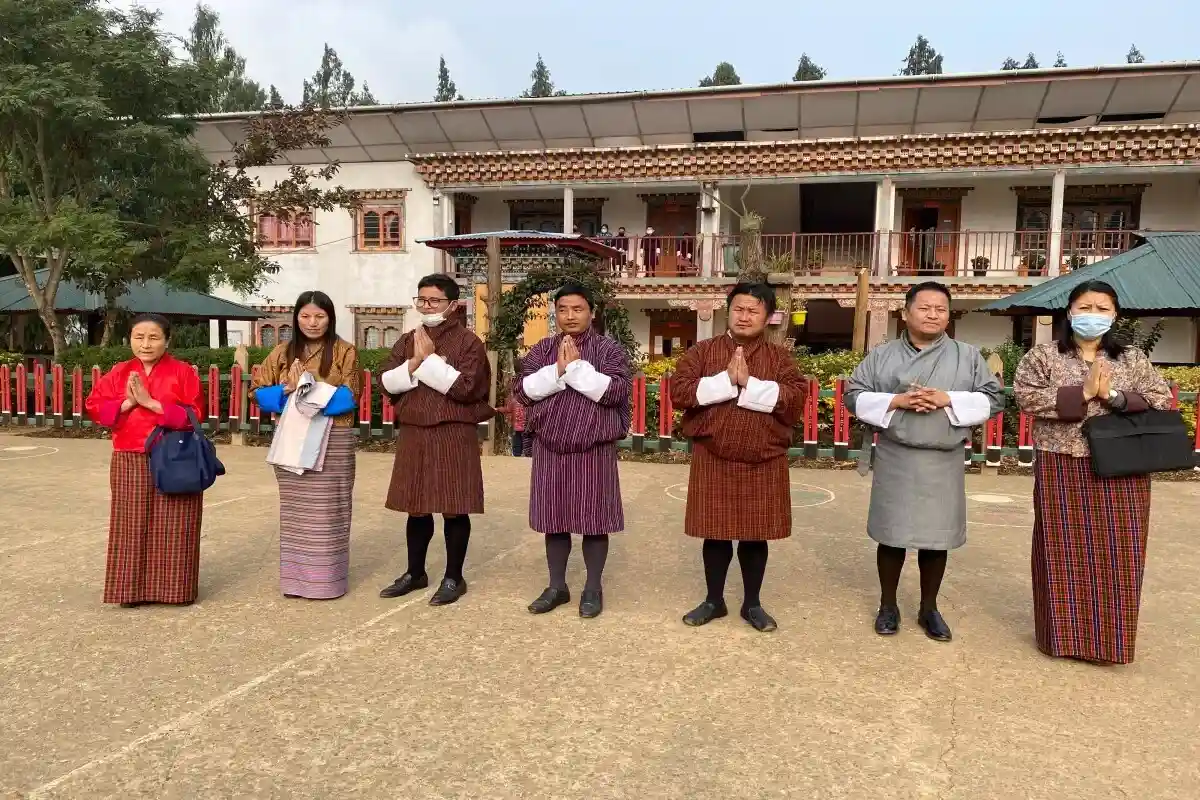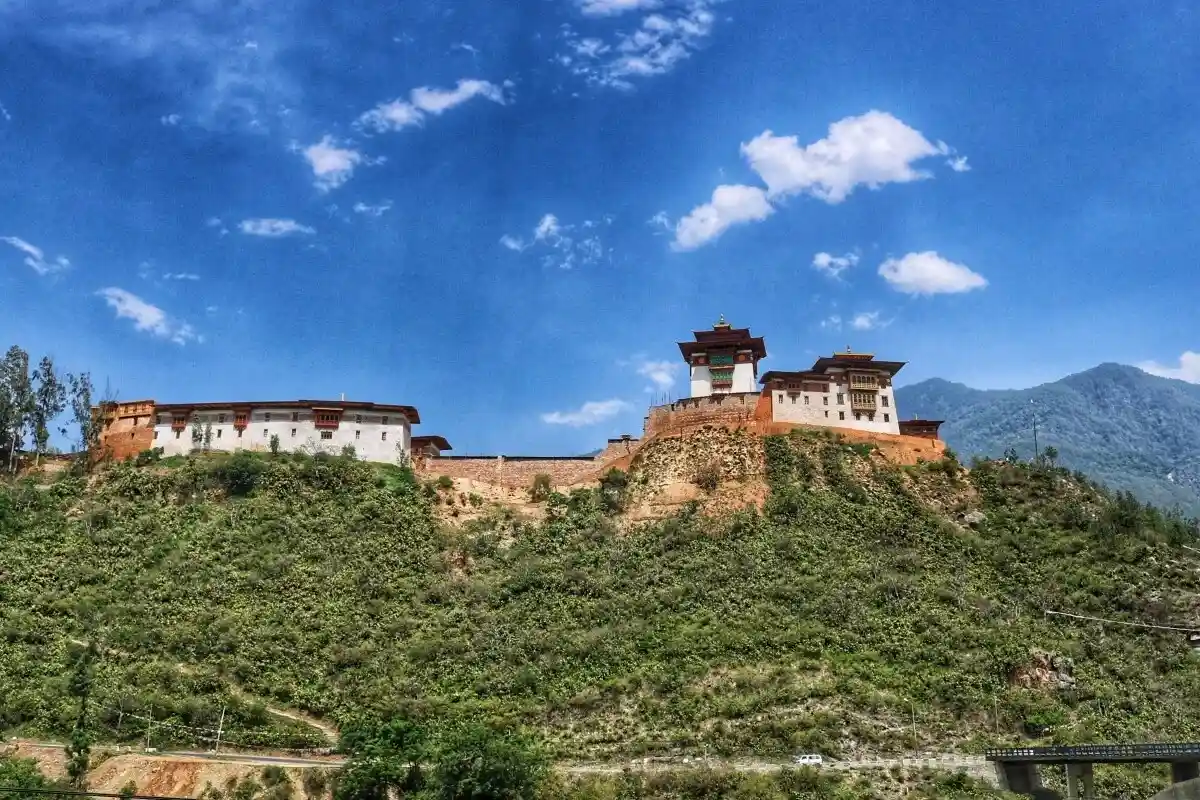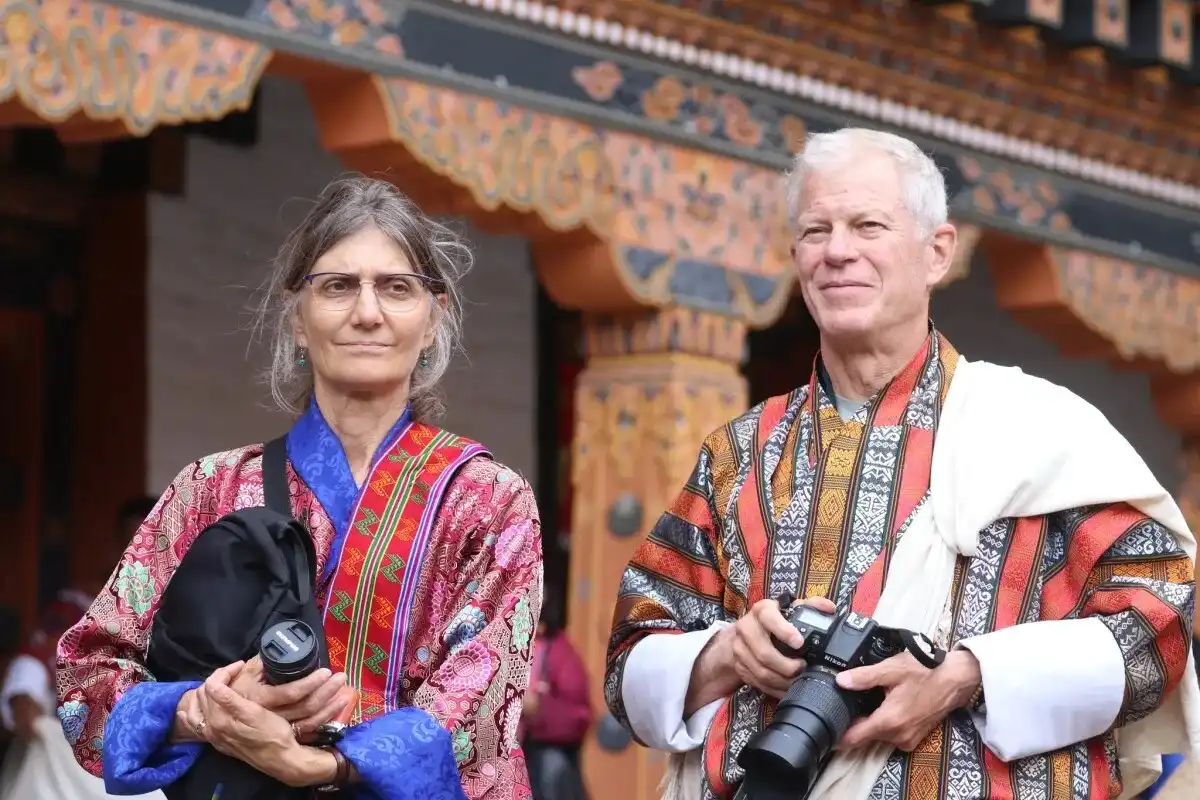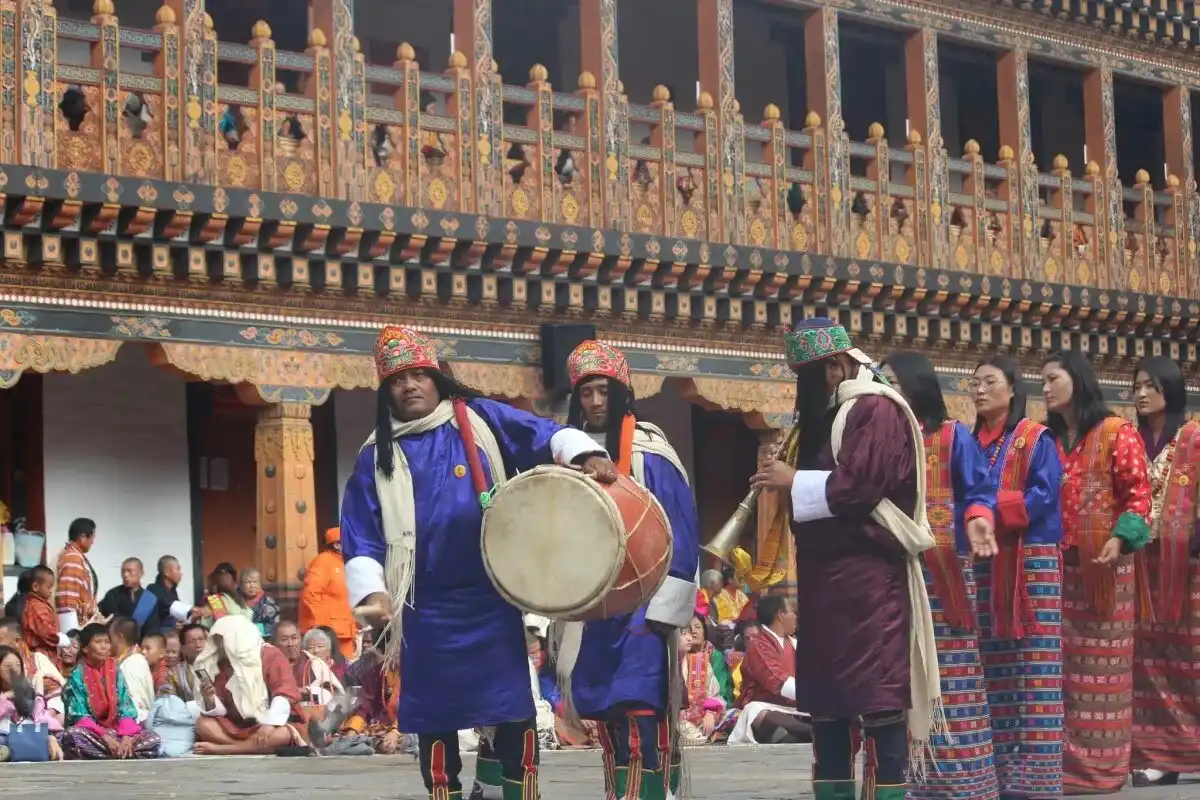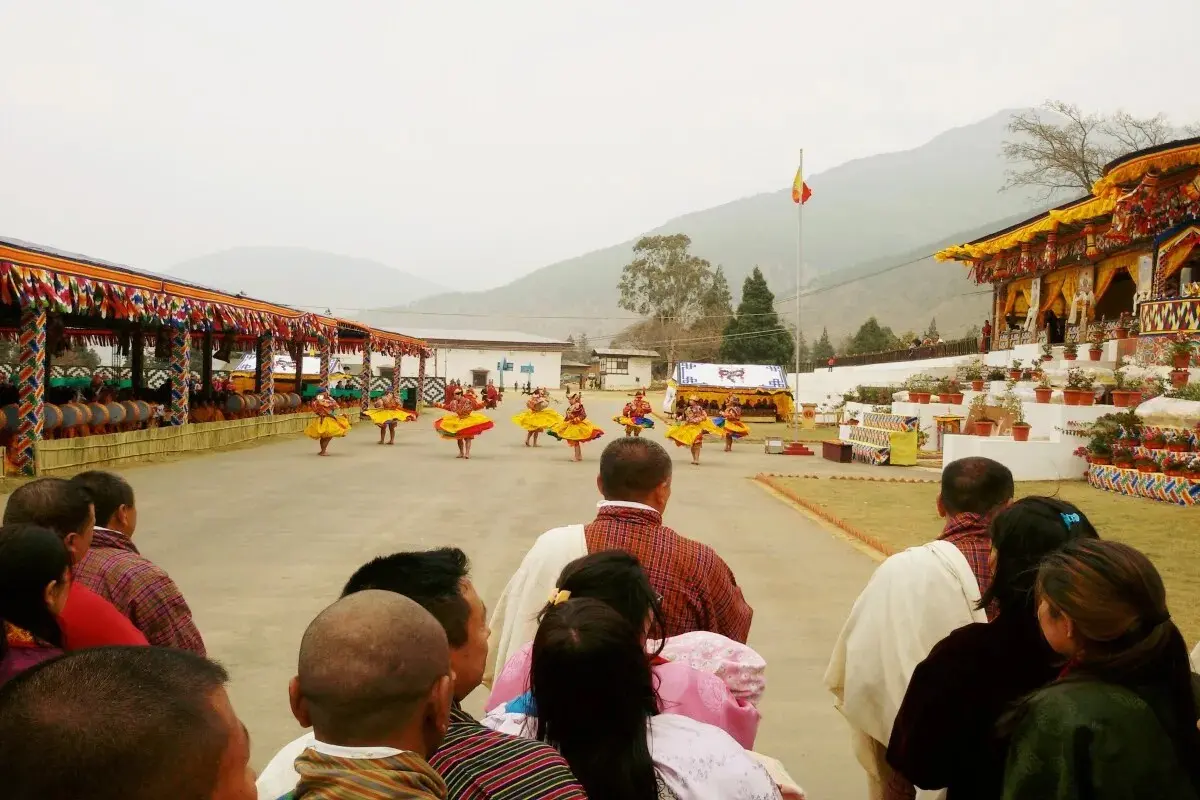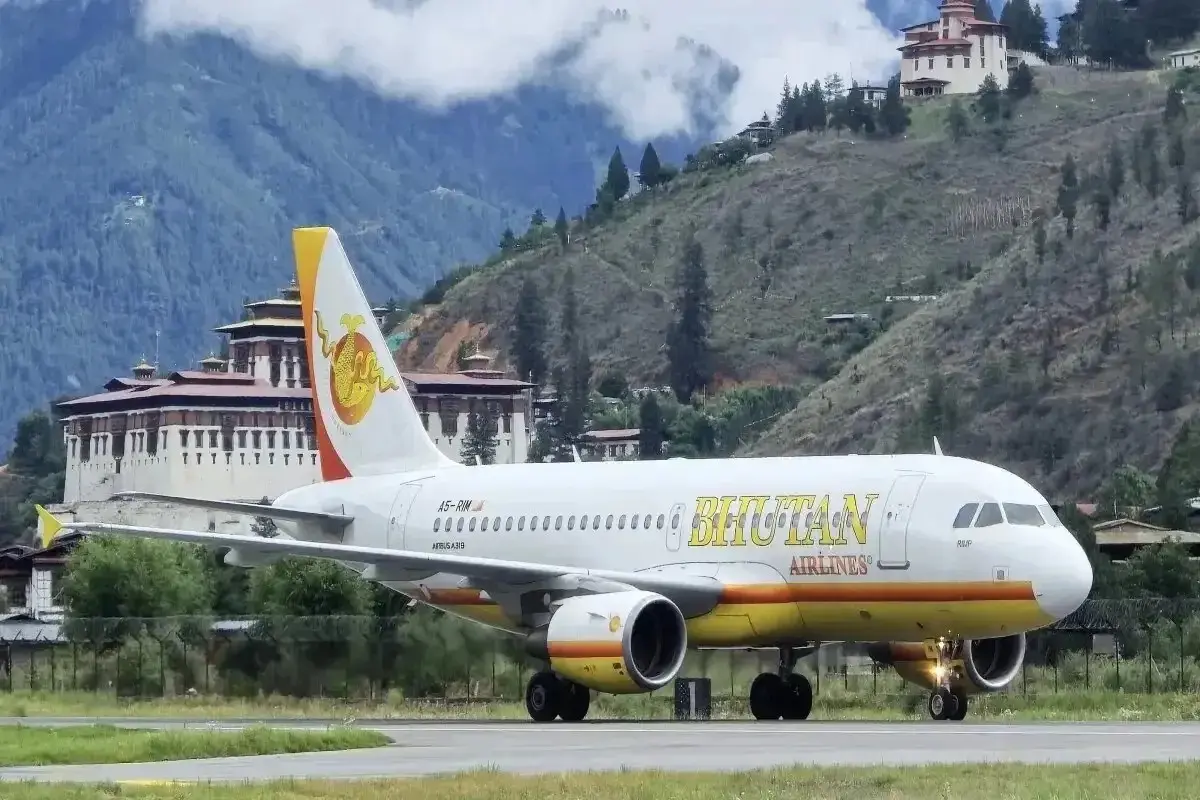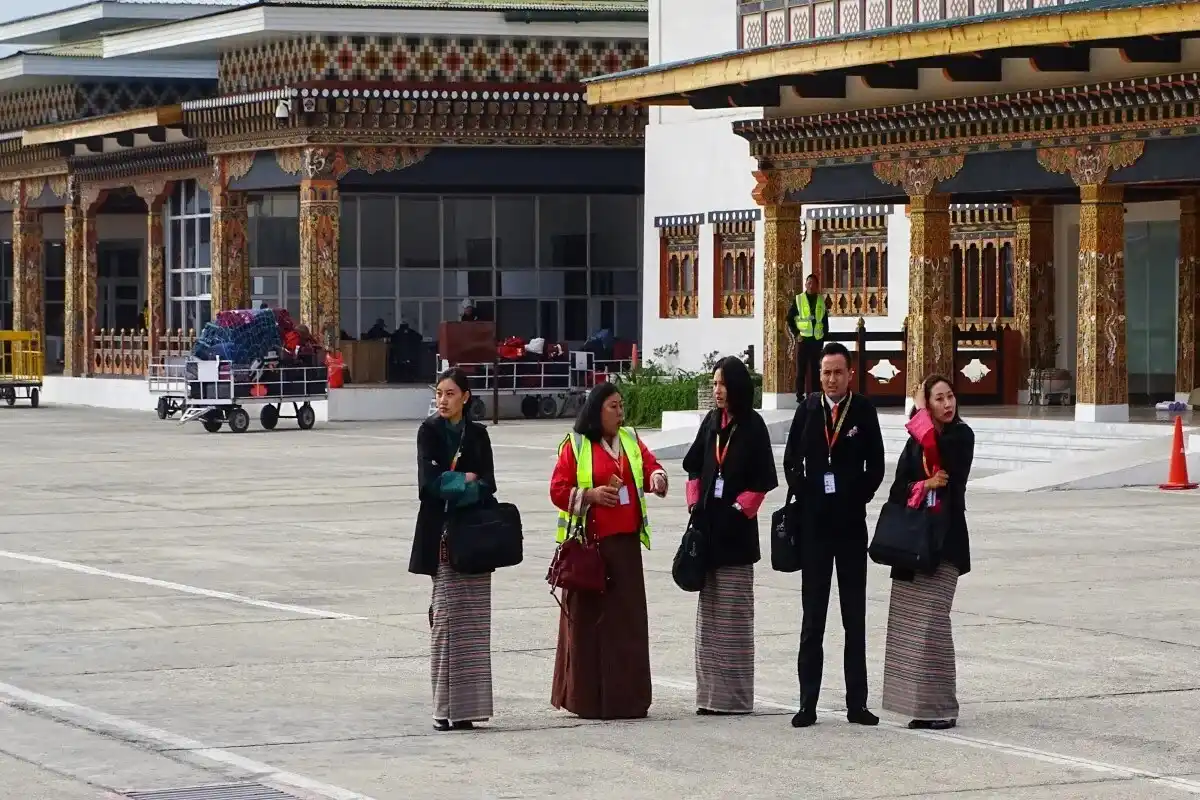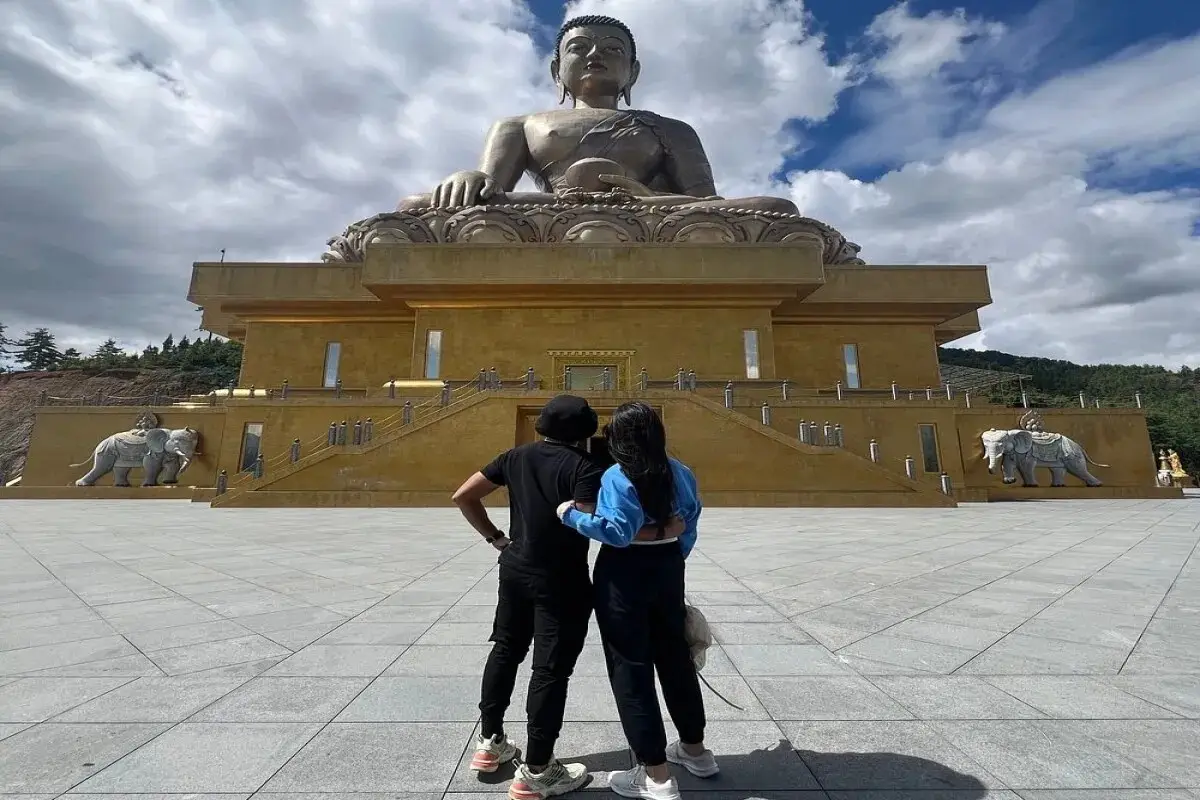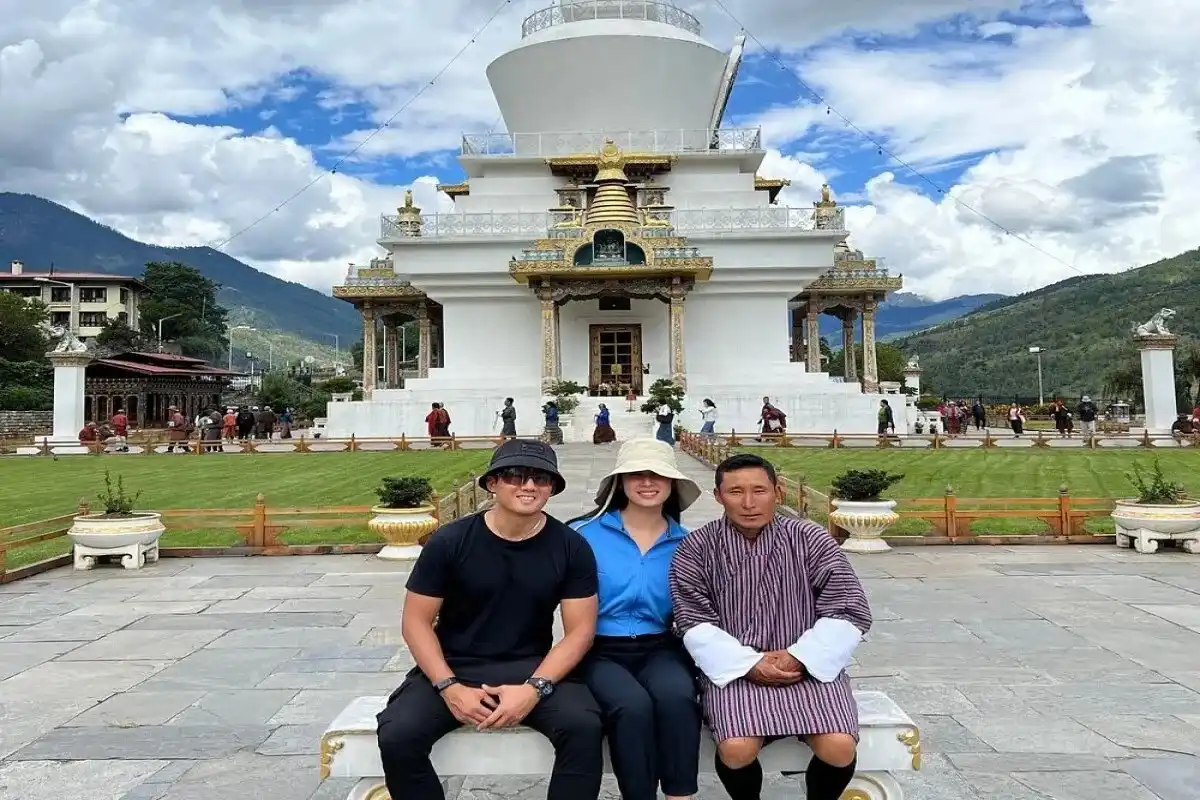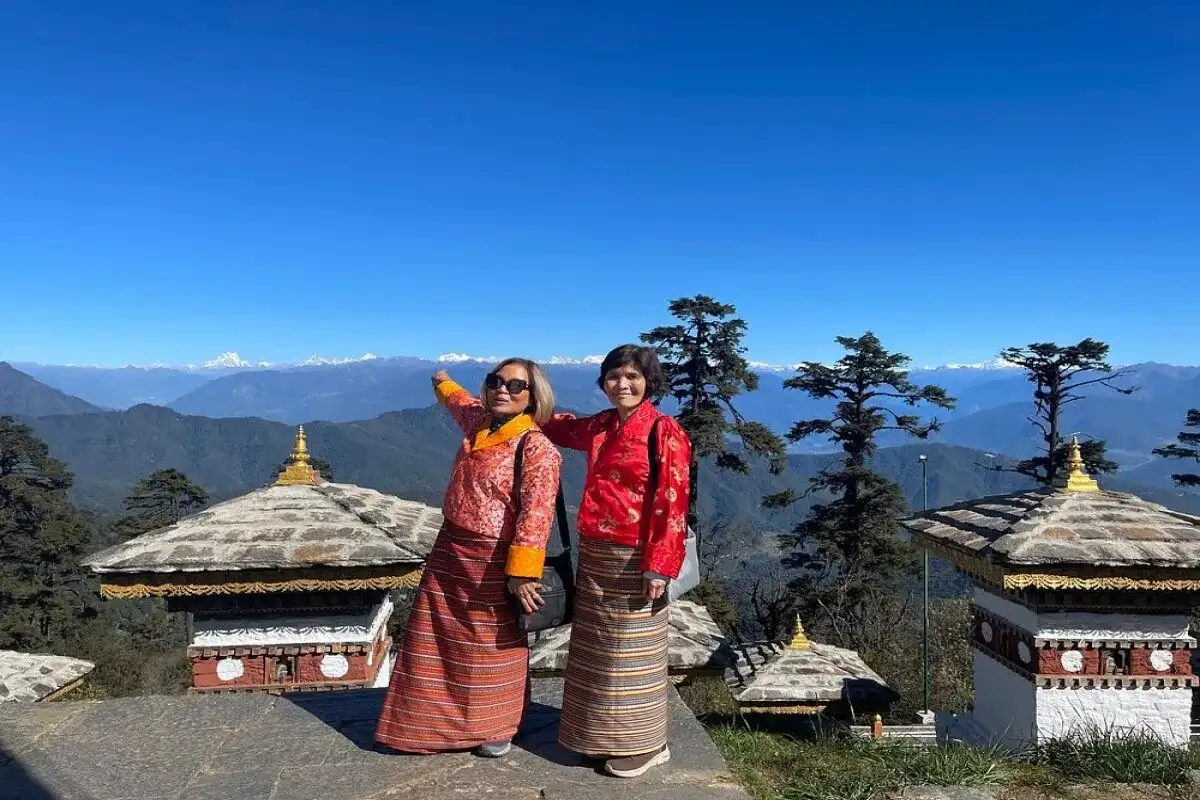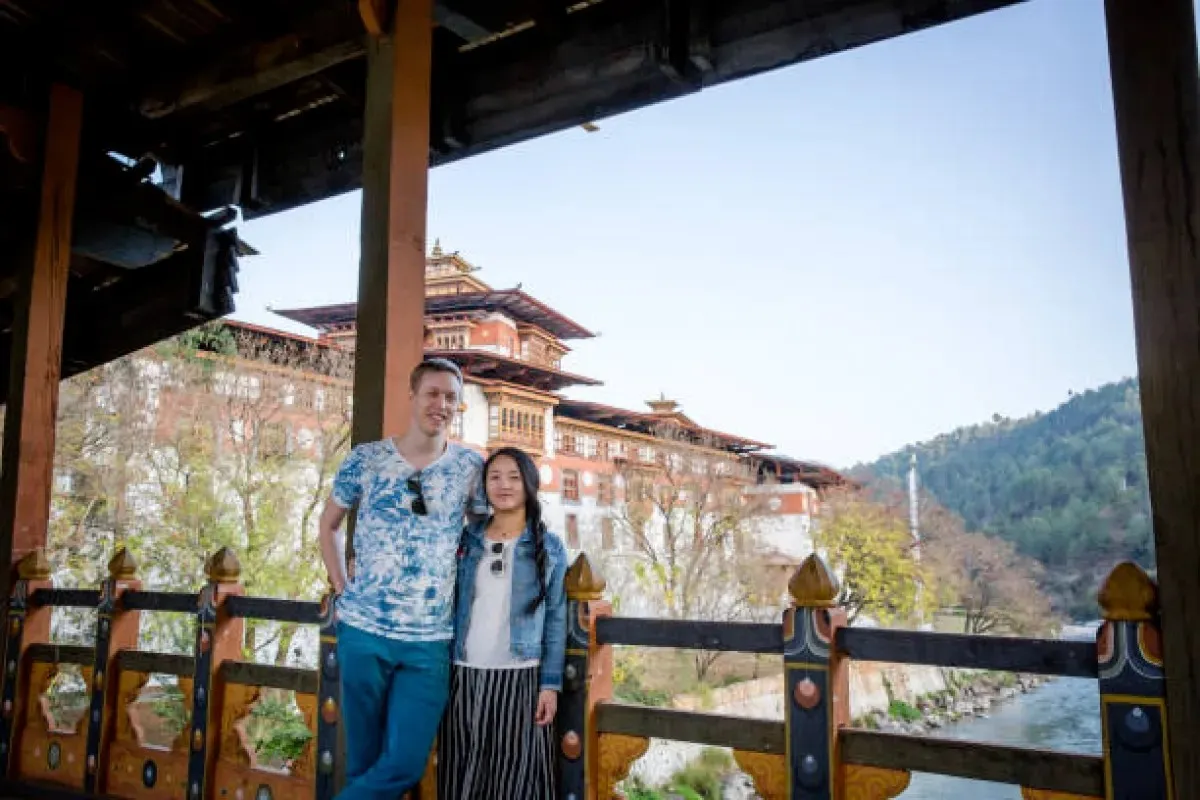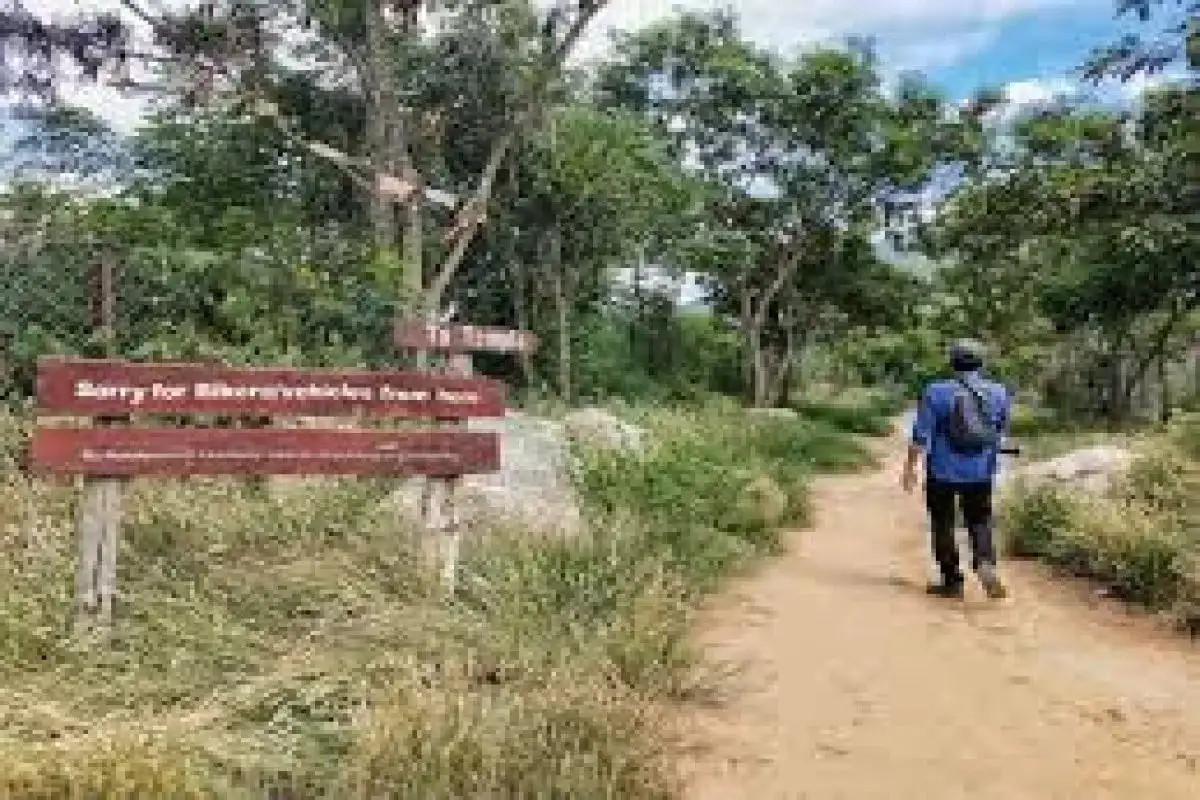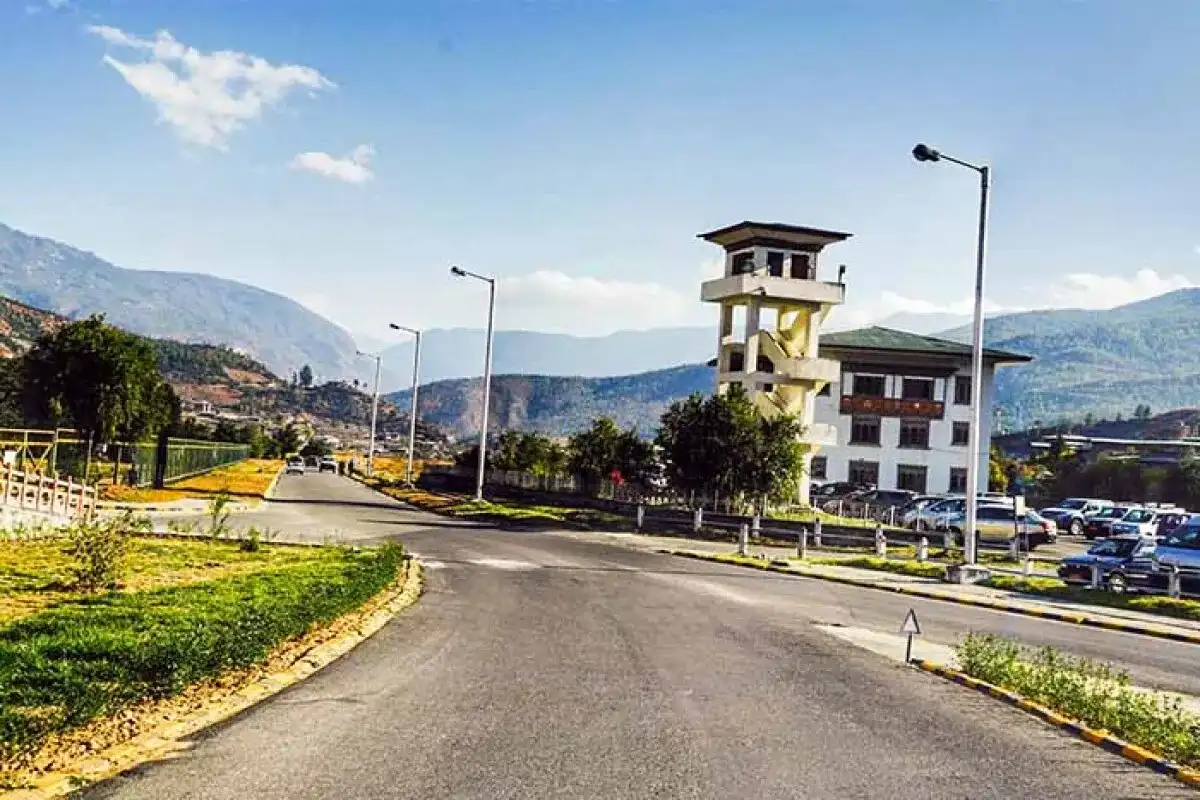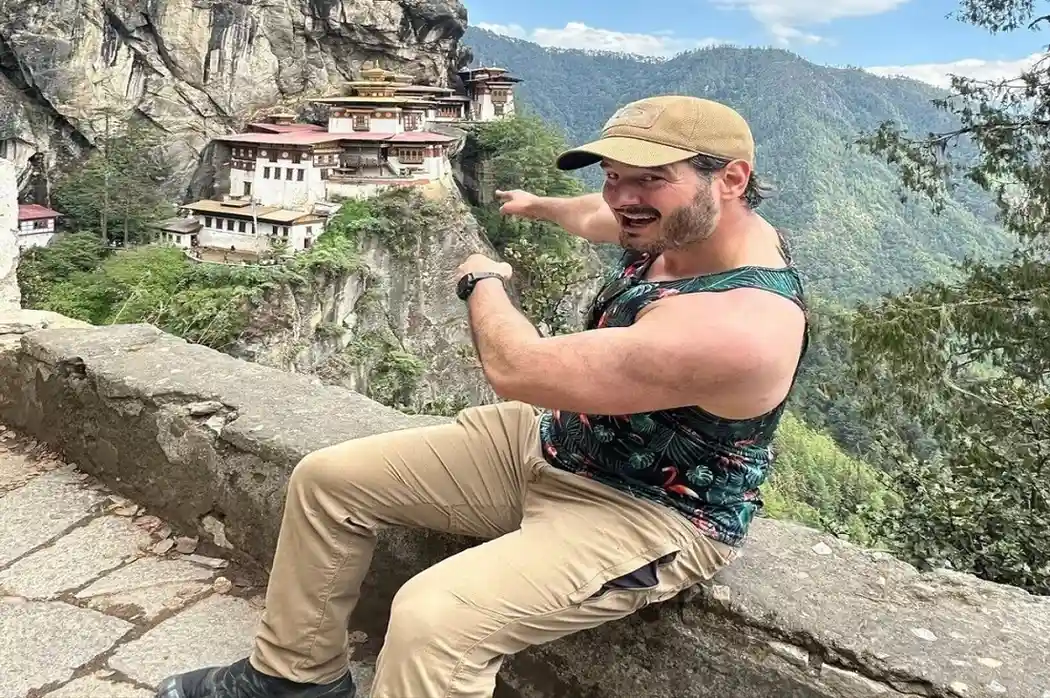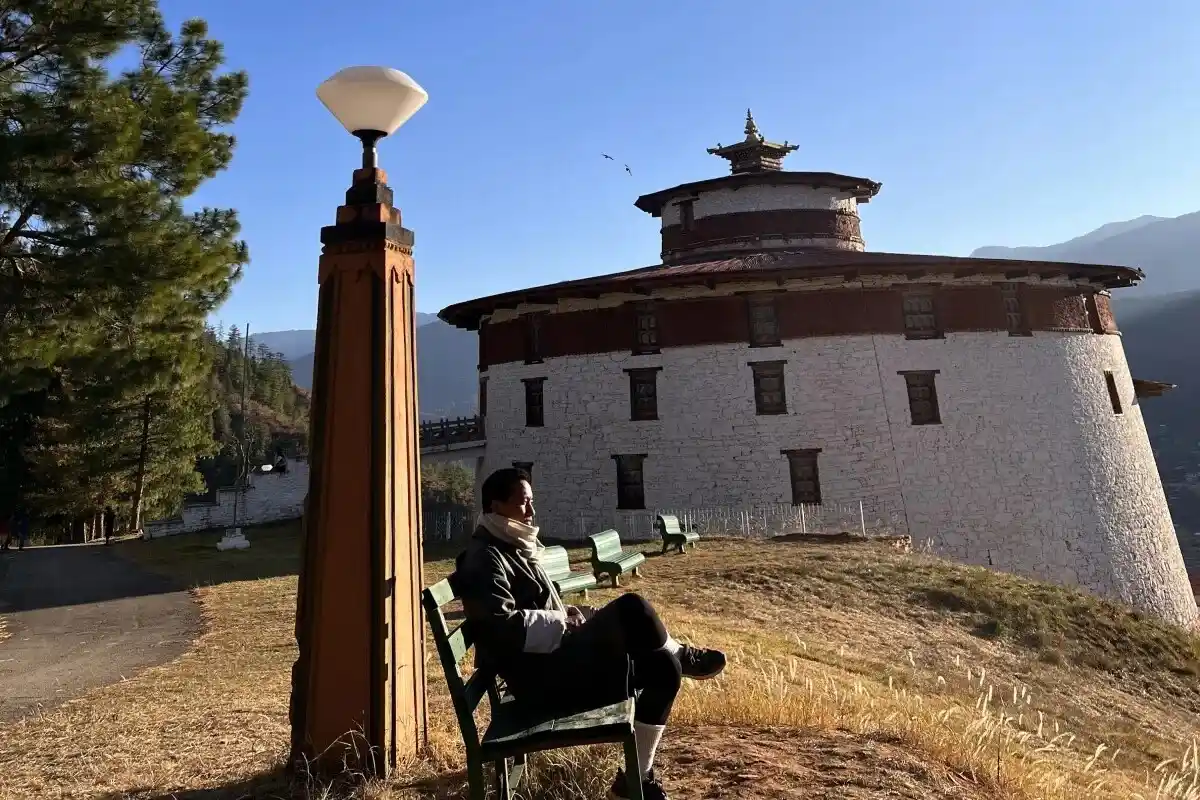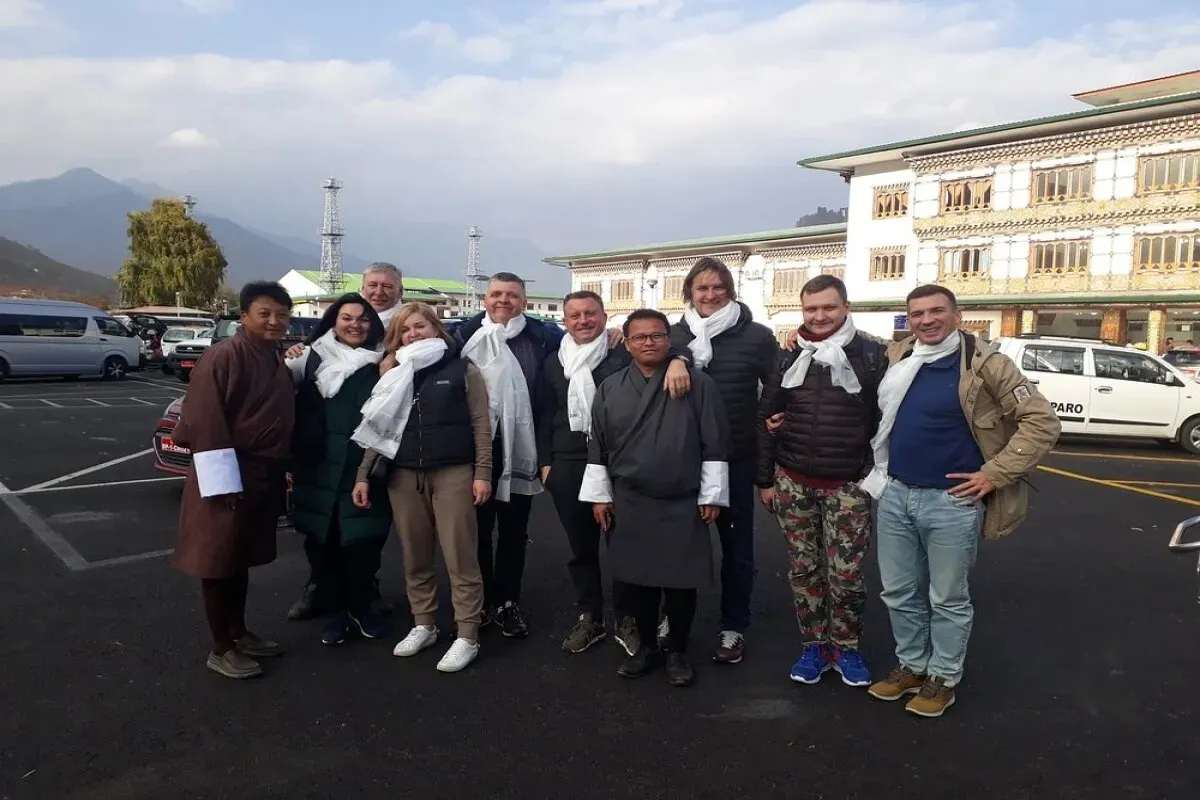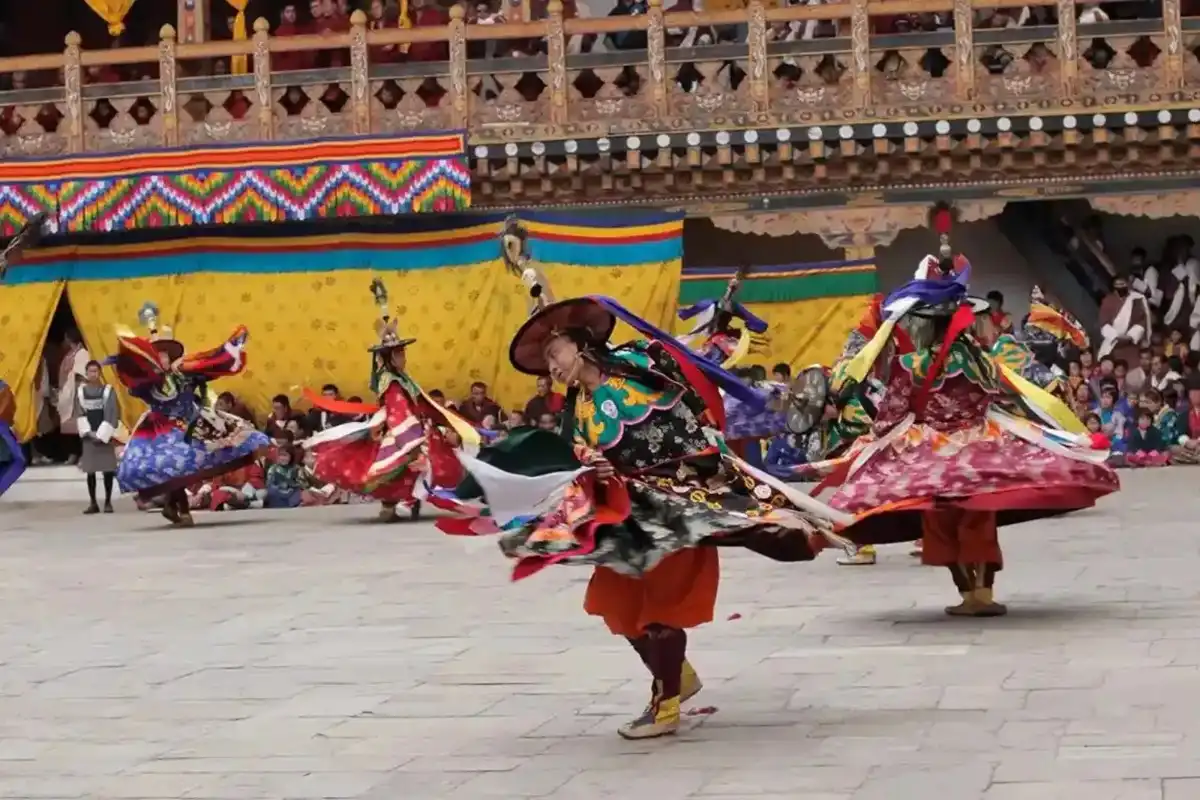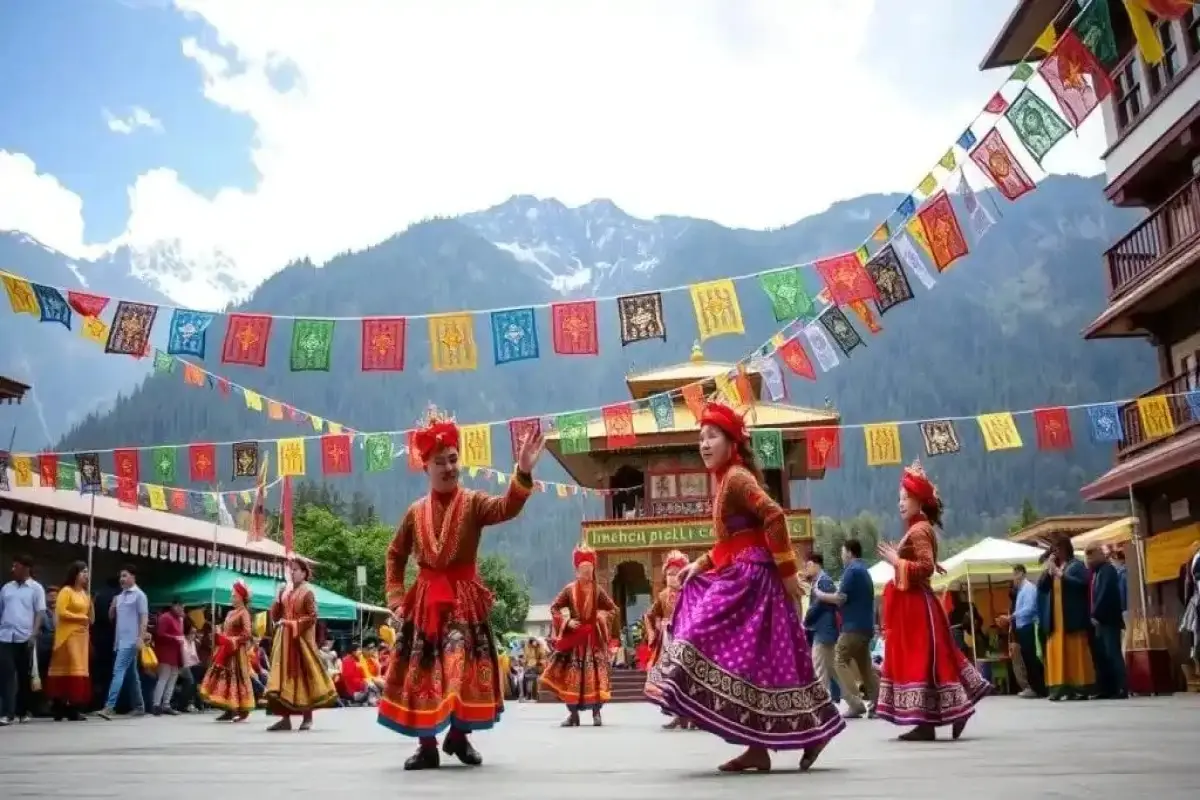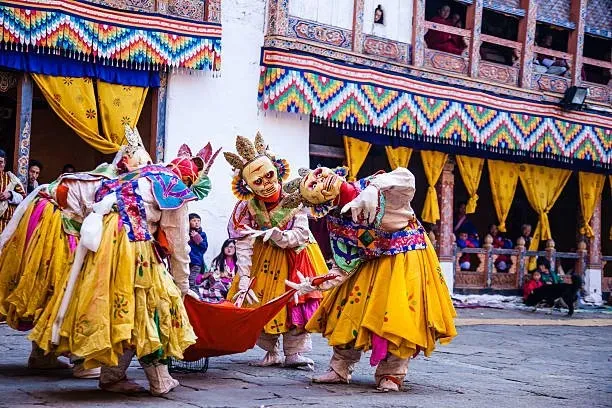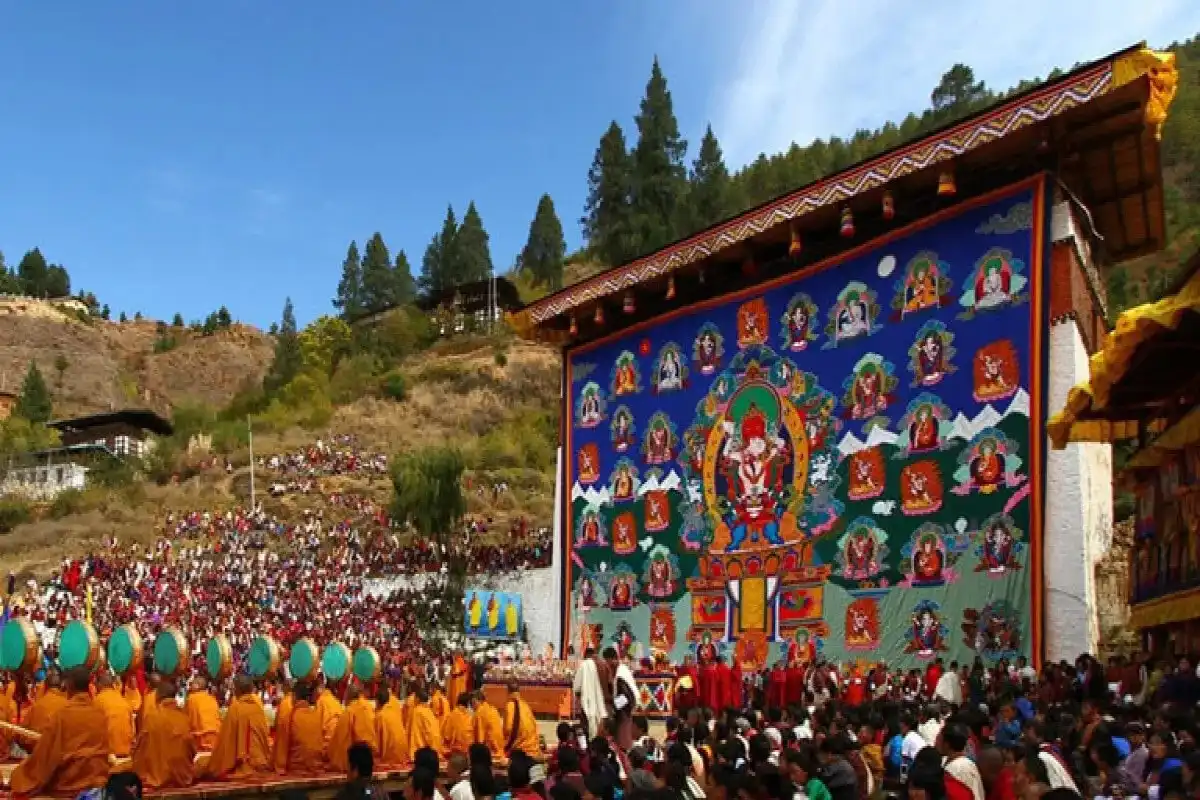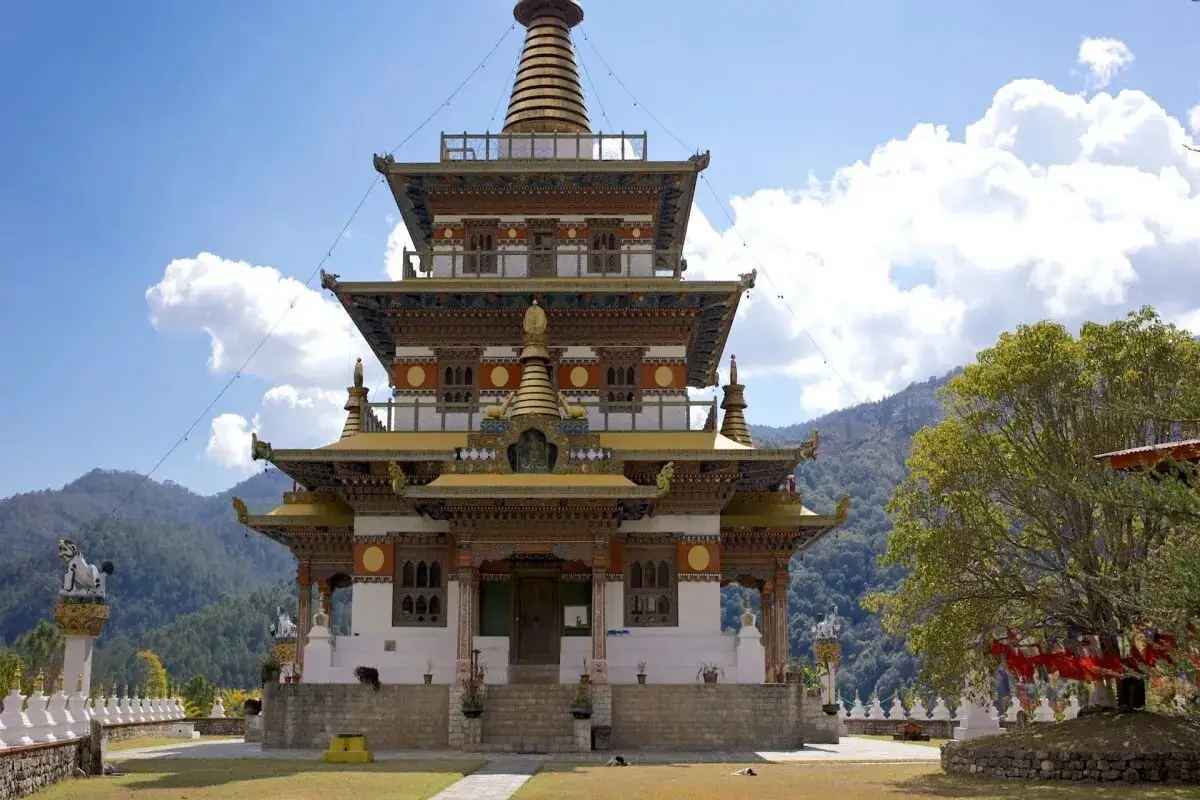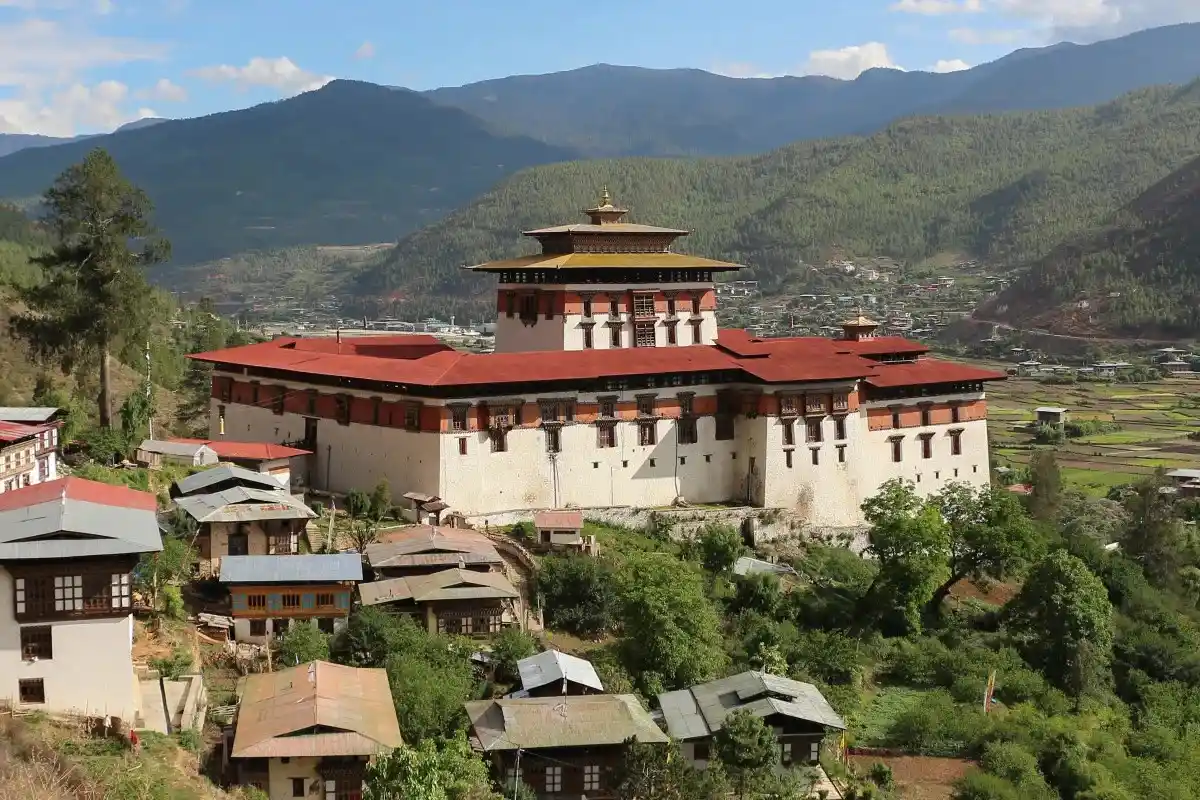Cultural Exploration of Wangdue Phodrang - 5 Days
This 5-day cultural journey in the beautiful country of Bhutan invites all of you to come and explore Wangdue Phodrang. In this trip, you will explore Wangdue Phodrang and its beautiful surroundings and wonders. This trip is mainly designed and is perfect for all cultural enthusiasts and promoters, nature-lovers, and people who love travelling and sightseeing. This journey offers everything you are looking for.
Highlights of the tour
- Explore Thimphu’s cultural sites – Buddha Dordenma, Tashichho Dzong, and museums
- Drive over Dochula Pass with panoramic Himalayan views
- Visit Punakha Dzong and hike to Chimi Lhakhang
- Hike to Taktsang Monastery
- Experience Bhutanese culture, traditions, and scenic landscapes
- Cultural Experiences in Wangdue Phodrang
Trip Overview
Wangdue Phodrang is one of Bhutan’s most enchanting and culturally blessed places. This place is mainly famous for how cultural heritage, culture, and sacred monastery are still filled with a lot of ancient traditions that are thriving at their peak. A cultural exploration is full of spirituality, the tradition of local people there, and wonderful views of the Himalayas. This 5-day plan starts in the heart of Bhutan and takes you through Thimphu, Punakha, and Wangdue Phodrang. This tour takes you from exploring and getting to know more about ancient fortresses to walking along beautiful and historic trails, along with seeing and shopping in lively local markets. It’s the perfect mix of Bhutan’s rich culture and wonderful places. It is perfect for travellers who want genuine and memorable events.
Highlights of Wangdue Phodrang
Explore Thimphu’s cultural sites – Buddha Dordenma, Tashichho Dzong, and museums
Thimpu is Bhutan’s capital. It will be the perfect start for your journey. This place is where the Buddha Dordenma is located. This showcases the area's beauty. Similarly, the Tashicho Dzong is also located in Thimphu. It is an important monastery and fortress. This dzong serves as both an administrative and a religious centre. Here, the Folk Heritage Museum and National Textile Museum provide lots of information about Bhutanese lifestyles, crafts, and traditions. Altogether, these reflect a lot of aspects of Bhutanese culture.
Drive over Dochula Pass with panoramic Himalayan views
Dochula Pass is located at 3,100 meters above the ground. It is also one of Bhutan’s most breathtaking mountain passes. It is mostly famous for the 108 memorial chortens present there. It is also known as Druk Wangyal Chortens. This pass gives you beautiful views of the snow-filled Himalaya. It’s also a spiritual stop where the prayer flags are present and carry blessings of the monks across the mountain air. The beauty here makes it a memorable moment in your journey.
Visit Punakha Dzong and hike to Chimi Lhakhang
Punakha Dzong, which is situated at the junction of two rivers, is an architectural masterpiece, and it also serves as an important symbol of Bhutanese history. It is often regarded as the “Palace of Great Happiness.” It is a must-visit for cultural enthusiasts and people who love to see beautiful architecture across the world. Nearby, there is also a place where you can go for a short hike. This place is called Chimi Lhakhang. It is also called the Temple of the Divine Madman. This place is famously known as a fertility temple, which is associated with the saint Drukpa Kunley.
Discover Wangdue Phodrang Dzong and local markets
Wangdue Phodrang Dzong is a place that is located on a hilltop. It overlooks the river just below it. It also offers stunning views and a glimpse into Bhutan’s insightful history. Although it was reconstructed after a fire, it remains an important cultural landmark. The surrounding local markets are equally filled with excitement. The markets there showcase Bhutanese crafts, textiles, and everyday life. Engaging with locals here gives travellers a chance to experience Bhutanese hospitality closely.
Hike to Taktsang Monastery
Taktsang Monastery is also one of the important places in Bhutan. It is famously known as Tiger’s Nest. It is considered Bhutan’s most iconic site. It is located on a cliffside. This sacred monastery requires a long uphill hike of 2–3 hours. The roads on this hike contain the pine forests covered with prayer flags and also offer a very beautiful view of the Paro Valley. Visiting Taktsang is both a spiritual and adventurous experience, which complements your Bhutanese cultural journey.
Experience Bhutanese culture, traditions, and scenic landscapes
This tour makes you deeply immersed in Bhutan’s living traditions and cultures. From monastic prayers and spiritual rituals inside dzongs to seeing wonderful markets filled with textiles and crafts, each moment spent in Bhutan will make your stay worthwhile. This trip will make you more connected to Bhutan's nature. The landscapes of Bhutan also contain diversity. Ranging from fertile valleys to high mountain passes, each place will give you more places for your exploration. The cultural and natural experiences make this journey memorable.
Cultural Experiences in Wangdue Phodrang
Wangdue Phodrang is famous for its festivals, markets, and historic dzongs. The annual festival of Wangdue Phodrang, known as Wangdue Phodrang Tshechu, is celebrated with mask dances and traditional rituals. This festival highlights Bhutan’s spiritual identity and the beliefs of the people living there. Exploring the dzong provides more knowledge about Bhutan's history and architecture. Whereas the markets introduce local crafts and daily life. Many visitors also enjoy hiking trails. Here are these trails that connect rural villages, where traditional farming and Bhutanese hospitality are always evergreen. These experiences will give you a close glimpse of the Bhutanese people and their lifestyle, along with their culture.
Places to Visit During the Trip
Best Season for the Cultural Exploration of Wangdue Phodrang
The best season for Wangdue Phodrang visit is during spring. Spring, generally during March–May, you can experience the real beauty of Bhutan. Similarly, in autumn from September–November, you can visit to experience Bhutan. These seasons are generally with clear skies and pleasant and moderate weather. These months you can also have the opportunity to see Bhutanese festivals. During spring, the rhododendron forest will be full of flowers. So you can get a wonderful chance to go through the trails of rhododendron forests. Autumn provides nice mountain views and cultural events such as the Wangdue Phodrang Tshechu.
Conclusion
The Cultural Exploration of Wangdue Phodrang is more than a break from your day-to-day life; it is an insightful journey into the country of Bhutan. Wangdue Phodrang offers travellers an impressive lesson that highlights the importance of the beauty of nature and culture with tradition, which presents a calm yet joyful experience. You will know how you can live your life without the need for modern technology. In five days here, you will experience a unique connection that lasts well throughout your life.
Wangdue Phodrang is one of Bhutan’s most enchanting and culturally blessed places. This place is mainly famous for how cultural heritage, culture, and sacred monastery are still filled with a lot of ancient traditions that are thriving at their peak. A cultural exploration is full of spirituality, the tradition of local people there, and wonderful views of the Himalayas. This 5-day plan starts in the heart of Bhutan and takes you through Thimphu, Punakha, and Wangdue Phodrang. This tour takes you from exploring and getting to know more about ancient fortresses to walking along beautiful and historic trails, along with seeing and shopping in lively local markets. It’s the perfect mix of Bhutan’s rich culture and wonderful places. It is perfect for travellers who want genuine and memorable events.
Highlights of Wangdue Phodrang
Explore Thimphu’s cultural sites – Buddha Dordenma, Tashichho Dzong, and museums
Thimpu is Bhutan’s capital. It will be the perfect start for your journey. This place is where the Buddha Dordenma is located. This showcases the area's beauty. Similarly, the Tashicho Dzong is also located in Thimphu. It is an important monastery and fortress. This dzong serves as both an administrative and a religious centre. Here, the Folk Heritage Museum and National Textile Museum provide lots of information about Bhutanese lifestyles, crafts, and traditions. Altogether, these reflect a lot of aspects of Bhutanese culture.
Drive over Dochula Pass with panoramic Himalayan views
Dochula Pass is located at 3,100 meters above the ground. It is also one of Bhutan’s most breathtaking mountain passes. It is mostly famous for the 108 memorial chortens present there. It is also known as Druk Wangyal Chortens. This pass gives you beautiful views of the snow-filled Himalaya. It’s also a spiritual stop where the prayer flags are present and carry blessings of the monks across the mountain air. The beauty here makes it a memorable moment in your journey.
Visit Punakha Dzong and hike to Chimi Lhakhang
Punakha Dzong, which is situated at the junction of two rivers, is an architectural masterpiece, and it also serves as an important symbol of Bhutanese history. It is often regarded as the “Palace of Great Happiness.” It is a must-visit for cultural enthusiasts and people who love to see beautiful architecture across the world. Nearby, there is also a place where you can go for a short hike. This place is called Chimi Lhakhang. It is also called the Temple of the Divine Madman. This place is famously known as a fertility temple, which is associated with the saint Drukpa Kunley.
Discover Wangdue Phodrang Dzong and local markets
Wangdue Phodrang Dzong is a place that is located on a hilltop. It overlooks the river just below it. It also offers stunning views and a glimpse into Bhutan’s insightful history. Although it was reconstructed after a fire, it remains an important cultural landmark. The surrounding local markets are equally filled with excitement. The markets there showcase Bhutanese crafts, textiles, and everyday life. Engaging with locals here gives travellers a chance to experience Bhutanese hospitality closely.
Hike to Taktsang Monastery
Taktsang Monastery is also one of the important places in Bhutan. It is famously known as Tiger’s Nest. It is considered Bhutan’s most iconic site. It is located on a cliffside. This sacred monastery requires a long uphill hike of 2–3 hours. The roads on this hike contain the pine forests covered with prayer flags and also offer a very beautiful view of the Paro Valley. Visiting Taktsang is both a spiritual and adventurous experience, which complements your Bhutanese cultural journey.
Experience Bhutanese culture, traditions, and scenic landscapes
This tour makes you deeply immersed in Bhutan’s living traditions and cultures. From monastic prayers and spiritual rituals inside dzongs to seeing wonderful markets filled with textiles and crafts, each moment spent in Bhutan will make your stay worthwhile. This trip will make you more connected to Bhutan's nature. The landscapes of Bhutan also contain diversity. Ranging from fertile valleys to high mountain passes, each place will give you more places for your exploration. The cultural and natural experiences make this journey memorable.
Cultural Experiences in Wangdue Phodrang
Wangdue Phodrang is famous for its festivals, markets, and historic dzongs. The annual festival of Wangdue Phodrang, known as Wangdue Phodrang Tshechu, is celebrated with mask dances and traditional rituals. This festival highlights Bhutan’s spiritual identity and the beliefs of the people living there. Exploring the dzong provides more knowledge about Bhutan's history and architecture. Whereas the markets introduce local crafts and daily life. Many visitors also enjoy hiking trails. Here are these trails that connect rural villages, where traditional farming and Bhutanese hospitality are always evergreen. These experiences will give you a close glimpse of the Bhutanese people and their lifestyle, along with their culture.
Places to Visit During the Trip
Best Season for the Cultural Exploration of Wangdue Phodrang
The best season for Wangdue Phodrang visit is during spring. Spring, generally during March–May, you can experience the real beauty of Bhutan. Similarly, in autumn from September–November, you can visit to experience Bhutan. These seasons are generally with clear skies and pleasant and moderate weather. These months you can also have the opportunity to see Bhutanese festivals. During spring, the rhododendron forest will be full of flowers. So you can get a wonderful chance to go through the trails of rhododendron forests. Autumn provides nice mountain views and cultural events such as the Wangdue Phodrang Tshechu.
Conclusion
The Cultural Exploration of Wangdue Phodrang is more than a break from your day-to-day life; it is an insightful journey into the country of Bhutan. Wangdue Phodrang offers travellers an impressive lesson that highlights the importance of the beauty of nature and culture with tradition, which presents a calm yet joyful experience. You will know how you can live your life without the need for modern technology. In five days here, you will experience a unique connection that lasts well throughout your life.
Short Itinerary
Arrive in Paro, drive to Thimphu, visit Tachog Lhakhang and explore evening market
Thimphu sightseeing - Buddha Dordenma, Textile and Folk Heritage Museums, Tashichho Dzong, drive over Dochula Pass to Punakha
Explore Punakha Dzong, hike to Chimi Lhakhang, visit Wangdue Phodrang Dzong and local market
Drive back to Paro, hike to Taktsang (Tiger’s Nest Monastery) with panoramic valley views
Paro sightseeing – Rinpung Dzong, National Museum, optional visit to Chukha Dzong/Pangri Zampa, and departure
Cultural Exploration of Wangdue Phodrang Itinerary
Today you’ll arrive at the Paro International Airport. There you’ll be greeted by the local people along with your guides. Then you’ll move towards your hotel, where you’ll have lunch, and after lunch, your journey to Bhutan will begin. You’ll now travel to Thimpu. On your way to Thimpu, you can stop at Tachog Lhakhang. It is a 15th-century temple built by the iron builder, Thangtong Gyalpo. Then, you’ll cross the Chuzom Bridge, where the three rivers meet. After arriving in Thimphu, you can check into your hotel. Today you’ll probably be tired, so you can go around some markets in Thimphi in the late evening. You’ll end your day by eating a hearty Bhutanese dinner.
You’ll start your day by going to Buddha Dordenma. It is a giant statue that overlooks Thimphu. You can then go towards the National Textile Museum and the Folk Heritage Museum. Here also you can also get many insights about the Bhutanese tradition and culture. Here, many traditional artworks have been protected for ages. After this, you can visit the iconic Taschichho Dzong. It is a very impressive fortress and monastery too. During the afternoon, you’ll depart from Thimphu and drive over Dochula Pass. This drive will offer you views of many prayer flags fluttering on the way and give you the opportunity to see 108 different chortens on the way. Then, you’ll finally arrive at the Punakha/Wangdue valley.
Today, after breakfast, you’ll begin your exploration. You’ll first go towards the Punakha Dzong. It is also one of the most historic and beautiful fortresses. You can then cross the wooden cantilever bridge to admire its riverside location. Next, you should take a scenic hike from Punakha Dzong to Chimi Lhakhang. The Chimi Lhakhang is a fertility temple which is dedicated to Drukpa Kunley. Next, you’ll move towards your next location, which is Wangdue Phodrang Dzong. It is also preached above the river. Later, you can explore the markets of Wangdue. Today you’ll stay overnight here.
After breakfast, you’ll drive back to Paro today. After reaching Paro, you can go to Taktsang Monastery, which is located at the top of a cliff. This hike is very adventurous and takes almost 2 to 3 hours to hike to the top of this cliff. Here, there are many pine forests in between of the hike as well, and when you feel tired, you can take many stops in between. You’ll get to experience many panoramic views in between the hikes, too. After you reach the monastery, you can explore its sacred halls and get lost in the spiritual atmosphere. You’ll return to your hotel in Paro to stay overnight there.
You can spend your final day in Bhutan by visiting some of the cultural sites of the country. You can visit the Rinpung Dzong. It is a fortress as well as a monastery that embodies Bhutanese architecture as well as artistry. Later, you can go to see the National Museum of Bhutan. It is housed in a watchtower. Later, if time permits, you can go to visit the Chukha Dzong or Pangri Zampa. This can be arranged for people who have more time in Bhutan. Then, finally, you’ll conclude your journey by going back to Paro International Airport to return to your homeland.
Know Before You Travel
-
Places you will visit in this trip:
During this journey, you and other explorers can get to explore historic cultural sites across Paro, Thimphu, Punakha, and Wangdue. The main highlights of this cultural exploration trip consist of visiting places such as Buddha Dordenma, Tashichho Dzong, the Folk Heritage Museum, Punakha Dzong, Chimi Lhakhang, and Wangdue Phodrang Dzong. The tour also takes you hiking to Taktsang Monastery. This monastery is considered one of Bhutan’s most holy landmarks, and as well as also takes you to visit many temples and monasteries in Bhutan. Each day will give you unique insights and knowledge about Bhutan’s history, spirituality, and traditions. This will make your journey more happening and culturally blessed, along with fun and adventure.
FAQs for Cultural Exploration of Wangdue Phodrang
Yes, Bhutan requires full tour payment in advance before your visa can be processed and issued. The government of Bhutan regulates this policy to ensure that all travel arrangements are confirmed through a licensed Bhutanese tour operator. We are a licensed tour operator that ensures you have everything you need for a trouble-free trip.
Any personal expenses are not covered in the package like:
- Tips for your guide and other staff
- Bottled drinks and snacks(personal expense)
- Souvenirs or local crafts
Credit cards are easily accepted in major cities like Paro and Thimphu. But in remote areas, you may not have access to a card or an ATM. So, it is best to carry some cash before heading for the trip.
Tipping is not mandatory, but it is a widely appreciated gesture and a customary way to show gratitude for good service. The tipping guideline would be to give USD 5-10 per day as a tip for the guides and other staff.
During spring, generally from May to March, and during autumn from September to November, will be the perfect timing to visit Bhutan for this itinerary.
The hike usually takes 4–5 hours round-trip, depending on pace. This includes the time of rest and some tea, and snack breaks in between.
The drives are filled with scenery and typically range from 2–4 hours. The roads are well-maintained during this season, so the drive is not that difficult.
The tour includes Buddha Dordenma, Tashichho Dzong, Folk Heritage Museum, Punakha Dzong, Chimi Lhakhang, Wangdue Phodrang Dzong, Rinpung Dzong, and Taktsang Monastery.
Yes, this itinerary includes most of the major highlights of Bhutan, which is perfect for first-time visitors to Bhutan.
Yes, families can enjoy this tour. The only challenging part may be the hike to Taktsang Monastery, but it can be managed at a slower pace.
Yes, these tour packages include local guides who can provide cultural insights and a wonderful experience at each site.
Paro International Airport is the only international airport in Bhutan. It is well connected by flights from cities like Bangkok, Delhi, Kathmandu, and Singapore.
Yes, airport pick-up and drop-off are included in the package. We will have your guide and driver meet you at the airport and transport you to your hotel.
While Bhutan's roads are mostly paved, some parts are narrow, winding, and occasionally affected by weather. However, we ensure your travel is safe, well-maintained, and driven by an experienced professional throughout the journey.
US Dollars (USD) are generally accepted at larger hotels, souvenir shops, and tour operators, particularly in Paro and Thimphu. However, it’s advisable to convert your currency to BTN for general purchases in rural areas. Other currencies like the Euro or the Pound are not commonly accepted directly.
No, credit or debit cards are not accepted on the trip, as it takes you through remote regions with no banking or electronic payment access. All trip-related payments like accommodation, meals, permits, etc, are paid in advance.
You can exchange foreign currency at the Paro International Airport, at banks, or through licensed money changers in cities like Thimphu and Paro. It's best to exchange enough cash before heading out on the trip.
You need a visa and all necessary permits for your trip. These documents can not be received on the day of your arrival, so they must be processed before coming here. After you book a trip with us, we will manage these papers for you. Your Bhutan visa is arranged by Orrog as part of the package.
The main way to come to Bhutan is through Paro International Airport, which is well-connected to cities like Bangkok, Delhi, Kathmandu, and Singapore. Most people arrive by air, but if you plan to come via road, you can enter through Phuentsholing, located on the southern border with India, which is the most commonly used entry point.
It is recommended to apply for the visa at least 20 days before your planned departure date so that there is enough time for processing your Bhutan visa, finalizing your itinerary, and arranging your guides and transportation. Although visa processing itself is relatively fast once payment is received, early preparation helps avoid delays and ensures availability, especially during peak seasons (spring and autumn).
You don’t require a passport-size photo for the visa, but it is wise to carry at least 2–4 recent passport-sized photographs during your trip. These may be needed for local permits, registration, or when applying for a local SIM card upon arrival in Bhutan.
Yes, you can lengthen your stay in Bhutan either before or after your trip. Bhutan’s tourism model requires visitors to pay a Sustainable Development Fee (SDF) and a daily package cost, so any extra days will involve additional charges. Extensions are a great opportunity to explore cultural sites in Paro, Thimphu, or even add another short trip or day hike.
The national language is Dzongkha, but many Bhutanese also speak English. If you speak English and are worried about communicating with the local people, you will have your guide as a translator.
Yes, all licensed tour guides in Bhutan are required to speak fluent English. Many are also trained in other languages such as German, Japanese, or French. Communication during the trip will be smooth and clear in English.
Most signboards, tourist maps, and information brochures are written in English, especially in tourist destinations like Paro, Thimphu, and trailheads. Directional signs along routes are often labeled in both Dzongkha and English.
No, learning Dzongkha is not at all needed for the trip, but knowing a few basic words like "Kuzu zangpo la" (Hello) or "Kadrinche la" (Thank you) is a good way to interact with the locals.
Language barriers are minimal, as your guide will handle all communication with locals and support staff. Your guide will translate for you during your interaction with the locals.
To greet people, you can greet with locals “Kuzu zangpo la” (Hello) by performing a slight bow. Most common greetings include physical greetings, such as shaking hands less visible, especially in rural areas.
Yes, but remember to seek permission, especially when taking photos of monks, locals, or temples. Please note that clicking photos is not allowed at most religious sites.
Visitors should dress modestly and respectfully. This means:
- Covering shoulders and knees
- Removing hats and sunglasses
- Not wearing shorts or sleeveless tops
This applies to both men and women.
Yes, Bhutanese society is deeply rooted in Buddhism and tradition. Here are some key taboos:
- Do not point your feet at people or sacred objects
- Never touch anyone on the head, as it is considered sacred
- Walk clockwise around temples, stupas, and religious monuments
- Avoid public displays of affection
While gifts are not expected, they may be accepted graciously if given with respect. It is advisable to consult with the guide before giving out anything.
Bhutan typically uses Type C, Type D, and Type G electrical outlets. Standard safe voltage is 230V and frequency is 50Hz; therefore, ensure that your equipment is compatible with this voltage.
Indeed, it is highly advised to take along a universal travel adapter, particularly one to fit a variety of types of plugs, because plugs can be different in a hotel or a guesthouse.
Bhutan follows Bhutan Time (BTT), which is UTC/GMT +6 hours. This time zone remains consistent throughout the year.
No, Bhutan does not observe daylight saving time. The country maintains the same time year-round.
Bhutan is 30 minutes ahead of India. For example, 12:00 PM in India is 12:30 PM in Bhutan.
Yes, souvenirs can be bought in Paro or Thimphu before or after the trip.
Some popular souvenirs include hand-woven textiles (kira and gho fabric), prayer flags, thangka (religious scroll) paintings, handmade paper products, traditional masks, and Buddhist artifacts.
You can do some gentle bargaining in local street markets. However, in government-run shops and fixed-price stores, prices are usually non-negotiable.
Yes, you can easily purchase a SIM card upon arrival in Bhutan. We will assist you with the process, and you'll need a passport copy and a passport-sized photo.
No, internet access is not available during the trip. However, Wi-Fi is available in hotels in Paro and Thimphu before and after the trip.
B-Mobile (by Bhutan Telecom) and TashiCell are the two main service providers. B-Mobile tends to have better coverage in rural and mountainous areas
Since the weather can be unpredictable and temperatures can vary drastically, layered clothing is essential. You should pack:
- Base layers (thermal tops and bottoms)
- Insulating layers like fleece or down jackets
- Waterproof and windproof outer layers
- Warm hats, gloves, and neck gaiters for freezing conditions
- Moisture-wicking socks and weatherproof trekking boots
Nighttime temperatures can be extremely cold, especially at high-altitude places. So you need to have enough clothing to keep you warm.
The weather is clear with mild daytime temperatures during spring and autumn.
Reviews & Ratings
-
Guarantee -
Thimphu,Bhutan -
975+17160228
Ready to Explore Bhutan?
Start your journey today and discover the magic of Bhutan with our expert guides and carefully crafted tours.
Book This Trip
-
No booking or credit card fees -
Best price guarantee -
Full customize trip
Ask a Question
Feel free to ask us anything about this tour. A travel expert will then get back to you as soon as possible
Ready to Explore Bhutan?
Start your journey today and discover the magic of Bhutan with our expert guides and carefully crafted tours.

